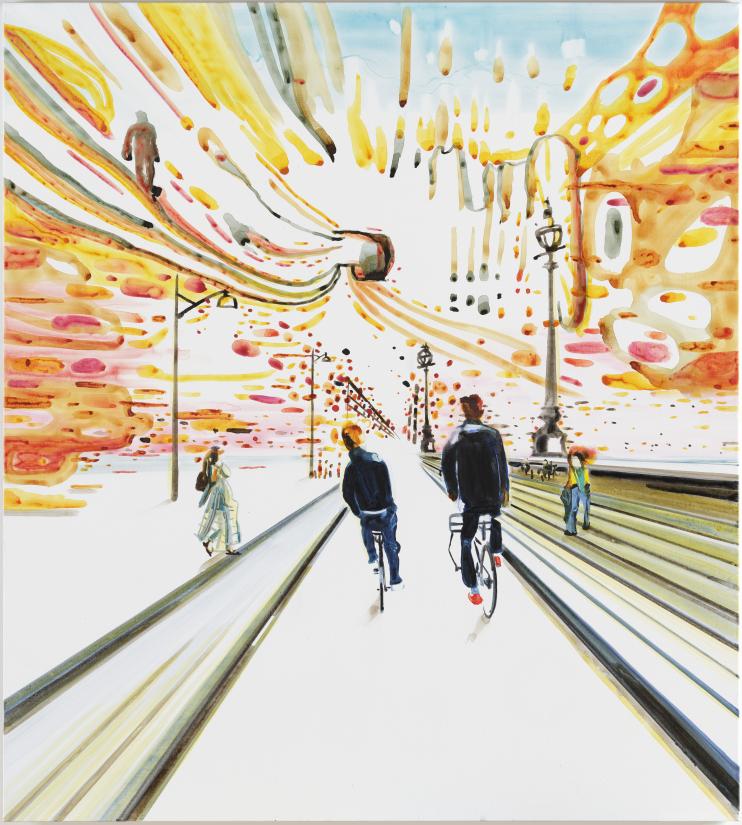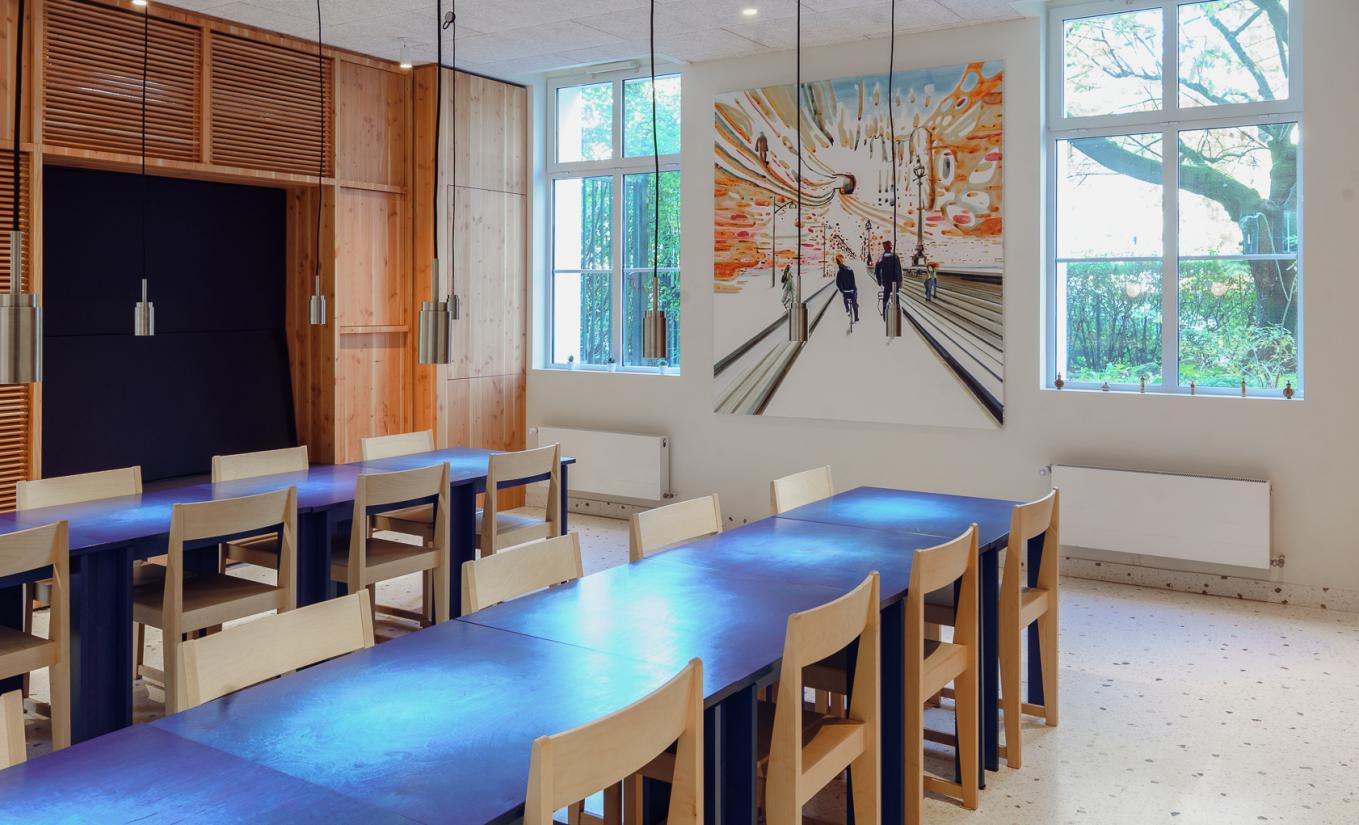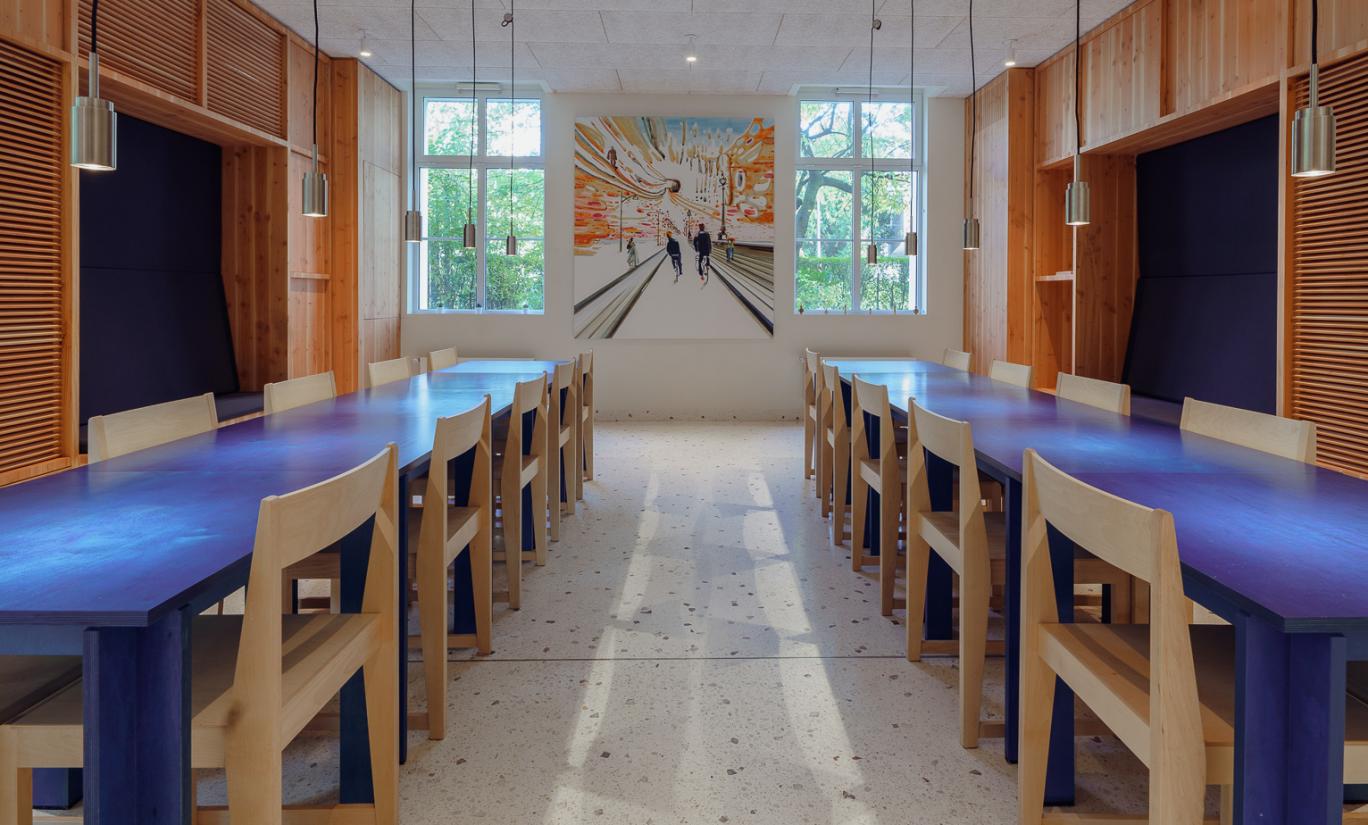John Kørner’s large, colourful painting Dronning Louises Bro portrays a seemingly endless white street with two bicyclists headed towards an indeterminate horizon. Above them is a jumble of warm colours in motion. A moving train, a walking silhouette and the characteristic ‘problems’ John Kørner has been working on throughout much of his career in the form of oval shapes, here appearing in the painted sky above Copenhagen.
Along the street, the familiar lampposts tower above the bridge, and upon close inspection, the viewer also sees that, as always, there are people hanging out on the benches on the bridge. These other figures expand the place, which is more than just a bridge between two Copenhagen districts. They transform the bridge into what it also is: a place where friends get together, and many paths cross.
‘Dronning Louises Bro is going to adorn the recently redesigned kitchen and dining area of the Danish Student House, a meeting place for our residents from Denmark and other nations. Right here, in the beating heart of the house, where people cook, eat, socialize and party. Now, the residents can also feast their eyes on this wonderful piece of Danish contemporary art. We are very grateful for this beautiful gift, which was created specially for the room and which adds a new dimension,’ says Marianne Bak Papiau, acting director of the Danish Student House in Paris.
The painting, which was created specially by artist John Kørner for the Danish Student House –Fondation Danoise – with support from the New Carlsberg Foundation, was recently installed and is now a permanent part of the building.
‘John Kørner’s painting establishes an opening and a vanishing point. In a sense, it adds a new, unfinished space to the space where it hangs. This particular expansive gesture is one that John Kørner is a master of creating. Here, the artist has achieved it in part by leaving much of the canvas blank, white. That is a bold and effective device. The fact that this opening in the middle of Paris actually points to such an iconic place as Dronning Louises Bro back in Copenhagen adds a further dimension to the painting,’ says Morten Kyndrup, member of the board for the New Carlsberg Foundation.
Dronning Louises Bro at the Danish Student House
John Kørner is known for a bright, intense colour palette. His paintings often feature yellow and violet, which he considers particularly Nordic colours. In this painting, the street is lit from both sides of the bridge. On one side is the original street lamp that was installed when the bridge was opened in 1887; to many Danes, this makes the image instantly recognizable as Dronning Louises Bro in Copenhagen. The other side of the bridge has a different type of street lighting, the traditional ‘Copenhagen lamp’, a copper-coloured half-dome that has become an iconic feature in the Danish capital. Thus, the cultural and historical influences are present in this simultaneously locally situated and outward-looking scene.
The Danish Student House in Paris
In 1928, a group of visionary individuals founded the Committee for the Danish Student House in Paris with the purpose of establishing a Danish student residence in a city with a large international student body. Fondation Danoise, as the residence was named, was financed with a mix of private and government funds and was officially opened by then Crown Prince Frederik in 1932. The building was designed by architect Kaj Gottlob with inspiration from classicism and the Nordic functionalist movement that emerged during the interwar period. At once sober, stringent and welcoming, the large pleasant rooms and common patio with a pergola form a harmonious setting for social life at the residence all year round.
About John Kørner
John Kørner (b. 1967) graduated from the Royal Danish Academy of Fine Arts in 1998 and lives and works in Copenhagen. His art often addresses topical issues, such as the refugee crisis, consumerism, climate change and human trafficking. Kørner employs a diverse range of methods in a body of work that includes sculpture, ceramics, video, theatre productions and installations. The artists is best known for paintings with a bright and optimistic colour palette that are a sensory delight until the moment when the more ominous and troubling problem addressed in the piece emerges in the painting’s dialogue with the viewer.





